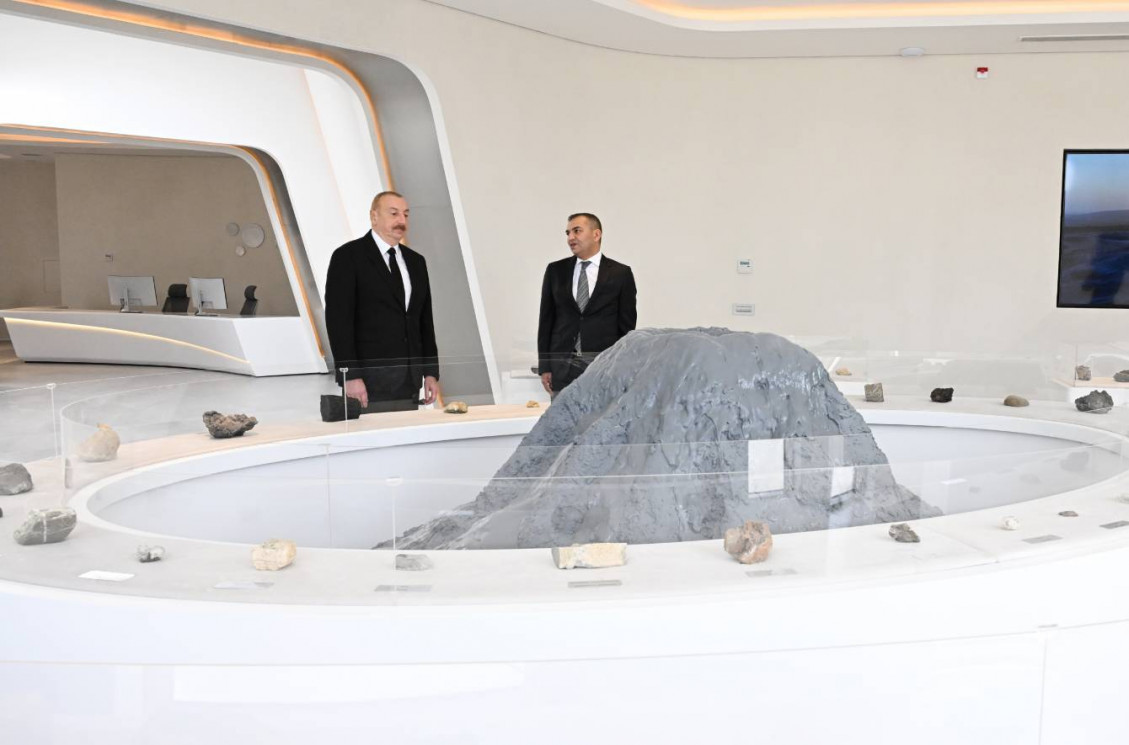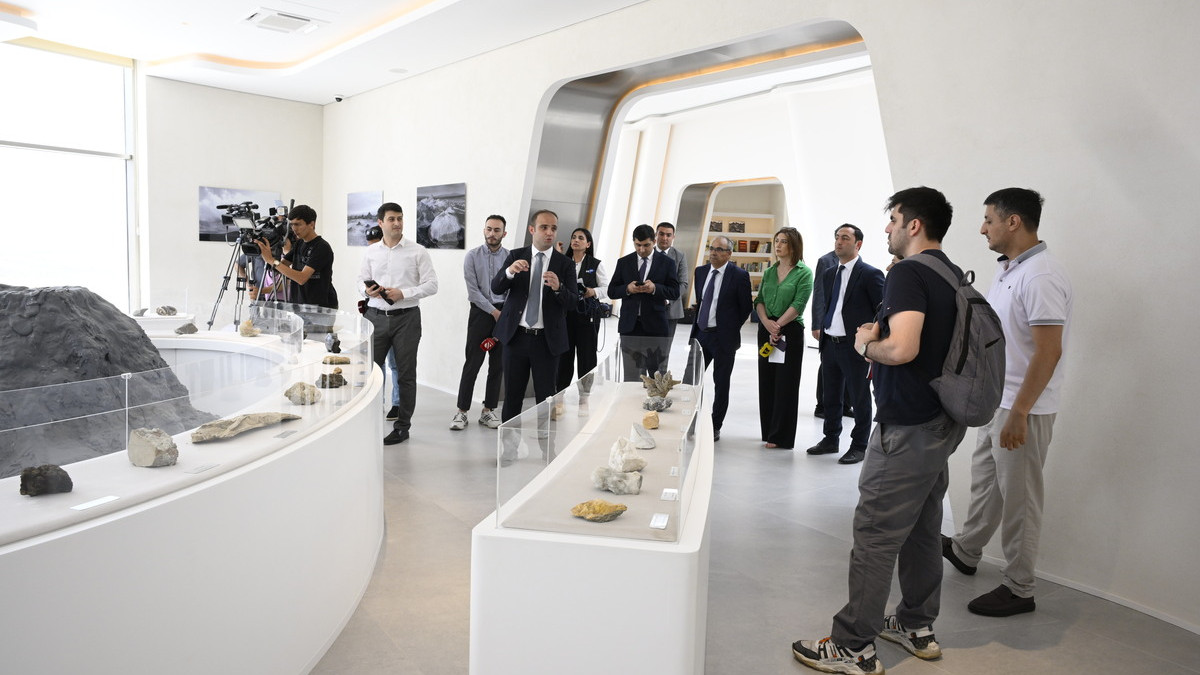President of the Republic of Azerbaijan, Ilham Aliyev attended the opening ceremony of the Mud Volcano Tourism Complex in Absheron District.
Fuad Naghiyev, Chairman of the State Tourism Agency of Azerbaijan, informed the head of state on the development of the complex.
Mud volcanoes are a fascinating natural phenomenon found in several countries worldwide, with Azerbaijan being recognized as a unique and classical region for their development. Out of the 2,000 mud volcanoes known globally, more than 350 are located in eastern Azerbaijan and the Caspian Sea basin. These volcanoes are primarily concentrated on the Absheron Peninsula, the islands around Baku, Shamakhi, Gobustan, and southeastern Shirvan. Within the Mud Volcano Tourism Complex, visitors can closely observe the "Ghilinj" mud volcano, which consists of eight mounds forming two parallel ridges that extend over a 20-hectare area, with lengths ranging between 300-500 meters. Although 60% of Azerbaijan’s mud volcanoes are active, no significant eruptions have been recorded for Ghilinj in scientific literature.
The Mud Volcano Tourism Complex spans 12 hectares and features an administrative building, a Tourism Information Center, an exhibition hall, and a workshop. The center provides detailed insights into mud volcanoes, including their natural and medicinal properties, as well as interactive models of the geological formations. The exhibition area also displays a collection of 80 rare minerals from different regions of Azerbaijan, with information on their chemical composition and origin. The workshop will host masterclasses on pottery and oil painting techniques.
A major attraction of the complex is the Natural History Exhibition Hall, which showcases diverse fauna and paleontological specimens. The exhibition features sections on "Big Cats," "Gobustan Fauna," "Wildlife Footprints in Azerbaijan," "The World of Insects," and "Small Animal Skeletons." Visitors can view 98 skeletons of wild and domestic animals, 870 species of dried insects, 57 preserved aquatic and terrestrial creatures, along with various reptiles and amphibians. All the skeletal remains on display are original specimens collected by Azerbaijani experts over decades, in compliance with bioethics standards. The exhibition highlights Azerbaijan’s biodiversity, featuring information on national parks and endangered species such as leopards, bezoar goats, gazelles, and Caspian seals.
The Mineral Exhibition within the complex showcases 80 types of minerals found across Azerbaijan, from Gobustan to Nakhchivan. Visitors can explore precious stones, crystals, and geological formations collected from different regions. The first section of the exhibition presents rock breccia samples ejected from mud volcanoes, while the second section displays minerals extracted from Azerbaijan’s natural resources. Informative materials on geological processes, rock formation, and mineral composition are also available.
To enhance public awareness and scientific interest, modern tourism infrastructure has been developed around the mud volcanoes. The complex includes a 110-seat restaurant, pedestrian walkways, and a panoramic observation deck, allowing visitors to view the volcanoes from an elevated position. Additionally, a parking area has been established to facilitate visitor access. For adventure-seeking tourists, quad bike tours offer a unique way to explore the rugged terrain in an environmentally friendly manner.
The establishment of the Mud Volcano Tourism Complex aims to promote Azerbaijan’s natural heritage, making mud volcanoes a key geo-tourism attraction while creating over 60 new jobs for local residents. The initiative contributes to Azerbaijan’s broader strategy to enhance eco-tourism and scientific tourism experiences.



















